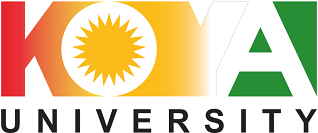Academic and Social Needs of Students of Grades 7–9 in Erbil Center
DOI:
https://doi.org/10.14500/kujhss.v7n2y2024.pp555-560Keywords:
Students’ Academic Needs, Students’ Social Needs, Public Schools, Education Policy, School Social WorkAbstract
The research delves into the issues and challenges facing students in grades 7–9 in the governmental schools in Erbil center. The majority of literature tackles these student groups combined with the other stage categories in the Erbil center. On the contrary, students at the secondary school levels, i.e., stage 7–9, are not investigated separately as needed since they have been a part of the larger sample populations. This research paper uses the transitional theory as the conceptual framework for the study. Issues like bullying, substance use, smoking, and peer pressure. A qualitative approach was used and focus groups were employed in addition to secondary data analysis in order to support the qualitative analysis. The research concluded that the above-stated challenges were evident among the study group in addition to the vital role of school social workers in dealing with these challenges. The boundary of the role of school social worker and low teacher-student ratio impacted the academic and social skills and achievement due to the limited authority in schools and the inability to participate in the formulation of Ministry of Education policy and programs. This research recommends raising the student-teacher ratio and sustainable training for teachers on communication and dealing with students at these grades.
Downloads
References
Ajani Ajani, I.R. and Akinyele, O.B., 2014. Effects of student-teacher ratio on academic achievement of selected secondary school students in Port Harcourt Metropolis, Nigeria. Journal of Education and Practice, 5(24), pp.100-106.
Athanasiades, C. and Deliyanni‐Kouimtzis, V., 2010. The experience of bullying among secondary school students. Psychology in the Schools, 47(4), pp.328-341.
Creswell Plano-Clark, Designing and conducting mixed methods research, SAGE Publication, Inc. (2006), p62
Diaz, K., Fett, C., Torres-Garcia, G. and Crisosto, N.M., 2003. The effects of student-teacher ratio and interactions on student/teacher performance in high school scenarios.
Doren, B., Murray, C. and Gau, J.M., 2014. Salient predictors of school dropout among secondary students with learning disabilities. Learning Disabilities Research & Practice, 29(4), pp.150-159.
Epstein, J. L. (1995). School/family/community partnerships: Caring for the children we share. Phi Delta Kappan, 76(9), 701-712.
Ezzarrouki, A. (2016). Peer Influence on Academic Performance. Journal of Psychology, 4(5). 145-157.
Gina Tomé, Margarida Gaspar de Matos, Celeste Simões, Inês Camacho, José AlvesDiniz: How Can Peer Group Influence the Behavior of Adolescents: Explanatory Model. Glob J Health Science 2012 4(2):26–35.
Koc, N. and Celik, B., 2015. The impact of number of students per teacher on student achievement. Procedia-Social and Behavioral Sciences, 177, pp.65-70.
McClure, M., 2005. Adolescence—the transition from childhood to adulthood. In Family Matters (pp. 71-82). Routledge.
Michael, S., Dittus, P. and Epstein, J., 2007. Family and community involvement in schools: Results from the school health policies and programs study 2006. Journal of School Health, 77(8), pp.567-587.
Ministry of Education-KRG, 2009. The Education System for Basic and Preparatory Schools.
Mtemeri, J., 2020. Peer pressure as a predictor of career decision-making among high school students in Midlands Province, Zimbabwe. Global Journal of Guidance and Counselling in Schools: Current Perspectives, 10(3), pp.120-131.
Overton, W.F., Cairns, R.B., Cairns, B.D., Valsiner, J., Gottlieb, G., Wahlsten, D., Lickliter, R., Thelen, E., Smith, L.B., Fischer, K.W. and Bidell, T.R., 2006. 2| DEVELOPMENTAL PSYCHOLOGY: PHILOSOPHY, CONCEPTS, METHODOLOGY 18. Handbook of Child Psychology, Theoretical Models of Human Development.
Rodriguez, R.J. and Elbaum, B., 2014. The role of student–teacher ratio in parents’ perceptions of schools’ engagement efforts. The Journal of Educational Research, 107(1), pp.69-80.
Sarkar, S., Das, M.G. and Banik, M.C., 2022. Peer pressure and its impact on academic achievements of students of secondary schools. Journal of Positive School Psychology, 6(3), pp.8104-8123.
Scanlon, C.L., Del Toro, J. and Wang, M.T., 2020. Socially anxious science achievers: The roles of peer social support and social engagement in the relation between adolescents’ social anxiety and science achievement. Journal of Youth and Adolescence, 49, pp.1005-1016.
Shahidul, S.M. and Karim, A.H.M.Z., 2015. Factors contributing to school dropout among the girls: A review of literature. European Journal of research and reflection in educational sciences, 3(2).
Uslu, M., 2013. Relationship between degrees of self-esteem and peer pressure in high school adolescents. International Journal of Academic Research, 5(3), pp.117-122.
Van Roekel, D., 2008. Parent, family, community involvement in education. Policy Brief. Washington, DC: National education Association.
Wanders, F.H., Dijkstra, A.B., Maslowski, R. and Van der Veen, I., 2020. The effect of teacher-student and student-student relationships on the societal involvement of students. Research Papers in Education, 35(3), pp.266-286.
Downloads
Published
How to Cite
Issue
Section
License
Copyright (c) 2024 Mahmood M. Hamza, Senik T. Mahmood

This work is licensed under a Creative Commons Attribution-NonCommercial-NoDerivatives 4.0 International License.







